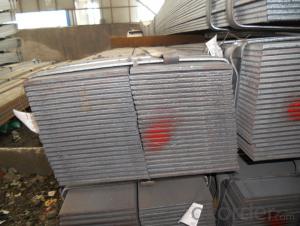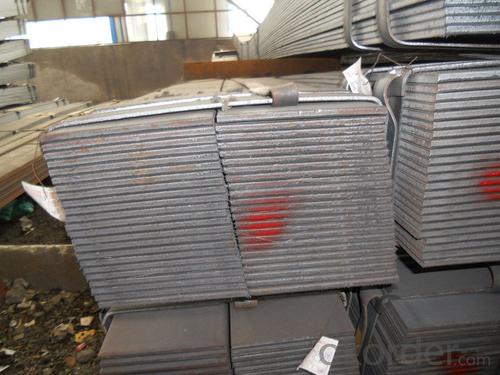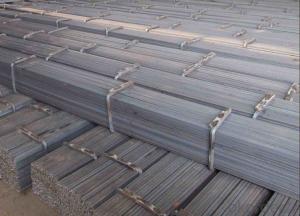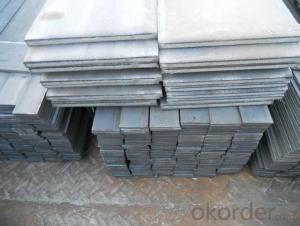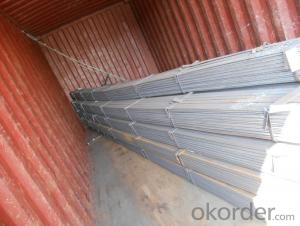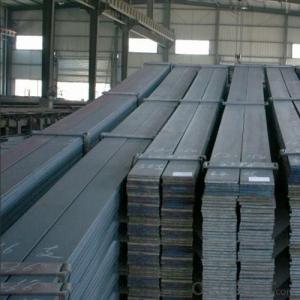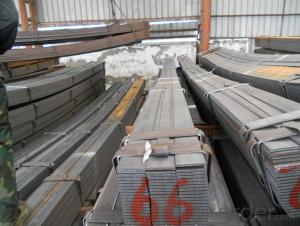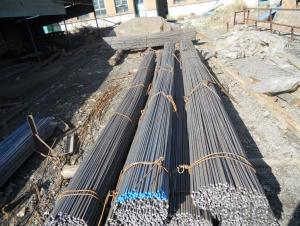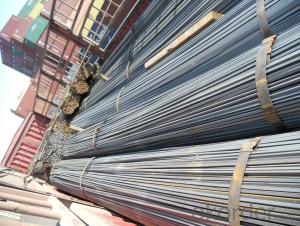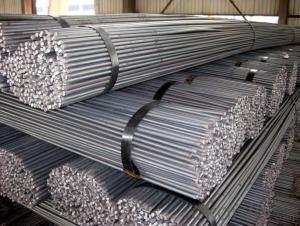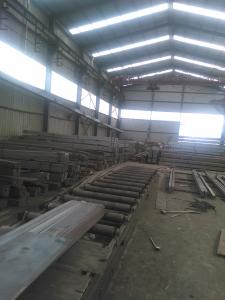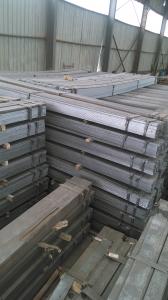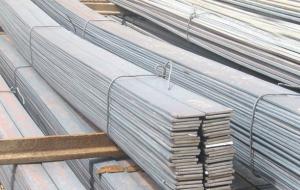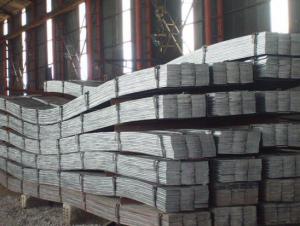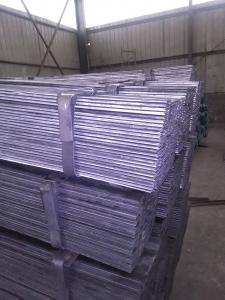Slitting Steel Flat Bars A36, SS400, Q235
- Loading Port:
- Shanghai
- Payment Terms:
- TT OR LC
- Min Order Qty:
- 25 m.t.
- Supply Capability:
- 200000 m.t./month
OKorder Service Pledge
OKorder Financial Service
You Might Also Like
Specification
Product Description:
OKorder is offering Slitting Steel Flat Bars A36, SS400, Q235 at great prices with worldwide shipping. Our supplier is a world-class manufacturer of steel, with our products utilized the world over. OKorder annually supplies products to African, South American and Asian markets. We provide quotations within 24 hours of receiving an inquiry and guarantee competitive prices.
Product Applications:
Slitting Steel Flat Bars A36, SS400, Q235 are ideal for structural applications and are widely used in the construction of buildings and bridges, and the manufacturing, petrochemical, and transportation industries.
Product Advantages:
OKorder's Slitting Steel Flat Bars A36, SS400, Q235 are durable, strong, and wide variety of sizes.
Main Product Features:
· Premium quality
· Prompt delivery & seaworthy packing (30 days after receiving deposit)
· Can be recycled and reused
· Mill test certification
· Professional Service
· Competitive pricing
Product Specifications:
Manufacture: Slitting Steel Flat Bars A36, SS400, Q235
Slitting precision (width) : 0.5 mm or less
Raw material: Q235B, Q345B, Q235-1 b
crosscutting precision (length) : 2 mm or less
Processing: the thickness of 2.0-16 mm;
Shear length: 2000 mm above
Wide degree: 15-1250 - mm;
Leveling precision: 1-2 MM square
Packaging: Export packing, nude packing, bundled
FAQ:
Q1: How many tons of Slitting Steel Flat Bars A36, SS400, Q235 could be loaded in containers?
A1: Usually the steel products are delivered by bulk vessel because of the large quantity and the freight. However, there are no bulk vessel enter some seaports so that we have to deliver the cargo by containers. The 6m steel product can be loaded in 20FT container, but the quantity is changed according to the size, usually from 18tons to 25tons.
Q2: How do we guarantee the quality of Slitting Steel Flat Bars A36, SS400, Q235?
A2: We have established an advanced quality management system which conducts strict quality tests at every step, from raw materials to the final product. At the same time, we provide extensive follow-up service assurances as required.
Q3: What is the difference between actual weight and theoretical weight?
A3: All the section steel has two weights: actual weight and theoretical weight. Actual weight is the weighing out when the product delivered from the mill. Theoretical weight is calculated by pieces. The invoice can be based on each of them as your request.
Images:
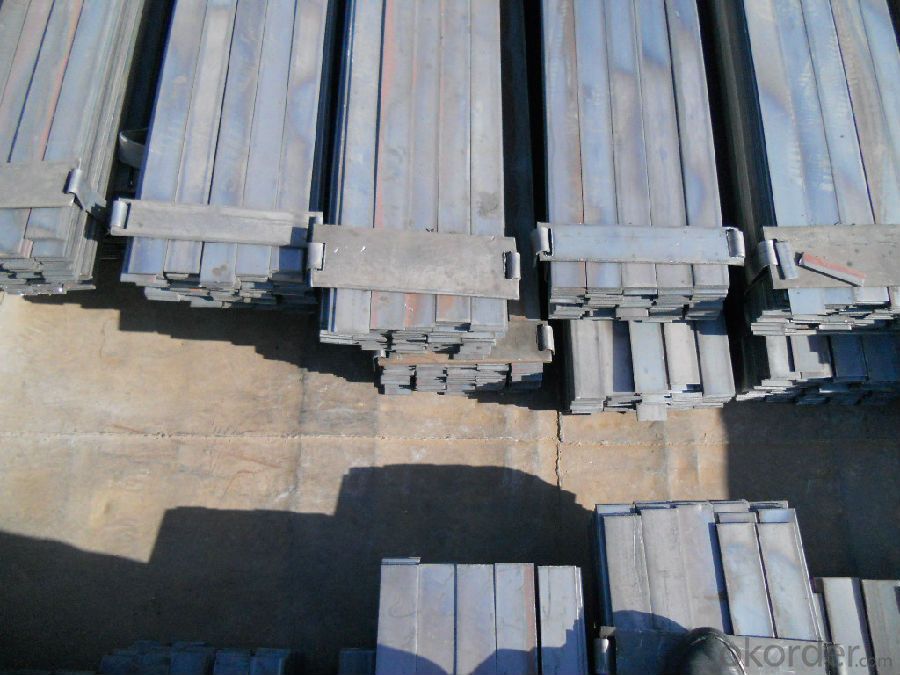
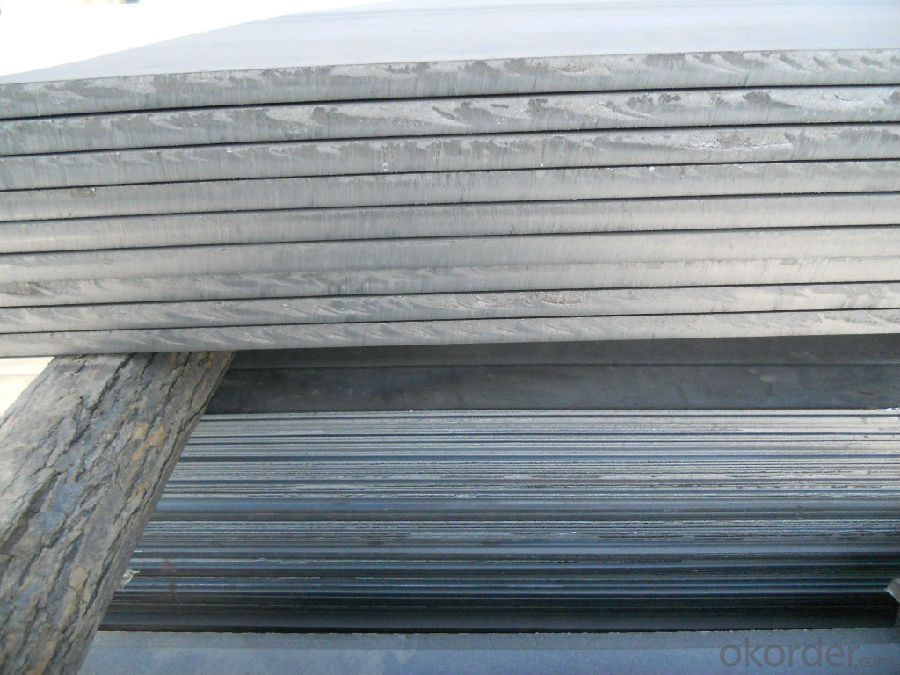
- Q: Are steel flat bars resistant to chemical exposure?
- Chemical exposure does not typically affect steel flat bars. Steel possesses durability and strength, which grants it resistance to numerous chemicals. Nevertheless, the extent of this resistance can differ based on the specific steel type and the chemicals it encounters. If exposed to corrosive chemicals like acids or alkalis, the steel may corrode. To counteract this, it is recommended to employ stainless steel flat bars, as they feature an extra layer of protection against corrosion. Furthermore, the steel's resistance can also be influenced by the length and concentration of chemical exposure. By taking appropriate precautions and conducting regular upkeep, the lifespan of steel flat bars can be extended, even in environments with chemical exposure.
- Q: Can steel flat bars be used in the manufacturing of material handling equipment?
- Certainly, material handling equipment can definitely incorporate steel flat bars. These bars, commonly produced from carbon steel, are renowned for their robustness, endurance, and adaptability. These attributes render them highly suitable for a multitude of applications within material handling equipment, including the construction of frames, supports, brackets, and other foundational components. Steel flat bars can be effortlessly welded, cut, and shaped into various forms and dimensions, enabling customization and versatility throughout the manufacturing process. Moreover, they possess exceptional load-bearing capabilities, making them well-suited for managing hefty loads and ensuring stability and dependability in material handling equipment. All in all, owing to their strength, durability, and ability to meet the exacting demands of such equipment, steel flat bars are a favored choice in material handling equipment manufacturing.
- Q: Are steel flat bars suitable for making gears or sprockets?
- Steel flat bars are indeed suitable for making gears or sprockets, especially if they are made from high-quality steel. Steel is known for its strength, durability, and resistance to wear and tear, making it an excellent material for gears and sprockets that need to withstand heavy loads and repetitive motion. Additionally, steel can be easily machined and shaped into the desired gear or sprocket profiles, making it a versatile choice for such applications. However, it is important to note that the specific requirements of the gears or sprockets, such as size, tooth profile, and surface finish, should be taken into consideration when selecting the appropriate steel flat bar for the job.
- Q: How do you store steel flat bars?
- Steel flat bars can be stored in a variety of ways depending on the available space and the quantity of bars to be stored. Here are a few common methods: 1. Vertical storage: This is a space-saving method where steel flat bars are stored vertically in a rack or a specially designed storage system. The bars are stacked one on top of another and secured in place to prevent any movement or falling. 2. Horizontal storage: In this method, steel flat bars are stored horizontally on a flat surface such as a shelf or pallet. They can be organized by size or length to ensure easy access and efficient use of space. It is important to properly stack and secure the bars to prevent any damage or accidents. 3. Wall-mounted storage: If floor space is limited, wall-mounted storage racks can be used. These racks have hooks or brackets where the steel flat bars can be hung vertically. This method not only saves space but also allows for easy identification and access to the bars. 4. Storage cabinets or drawers: For smaller quantities of steel flat bars, storage cabinets or drawers can be used. These provide a secure and organized storage solution, protecting the bars from dust, moisture, and other potential damages. Regardless of the chosen storage method, it is important to keep steel flat bars in a clean, dry, and well-ventilated area to prevent rust or corrosion. Additionally, it is advisable to label the bars with their dimensions or specifications for easy identification and inventory management.
- Q: Can steel flat bars be used for making stair treads or steps?
- Yes, steel flat bars can be used for making stair treads or steps. Steel flat bars are strong and durable, making them suitable for supporting weight and providing stability. They can be welded or bolted together to create a sturdy structure for stair treads or steps. Additionally, steel flat bars can be easily customized and shaped to fit specific design requirements.
- Q: How do steel flat bars perform in high-pressure environments?
- Steel flat bars perform well in high-pressure environments due to their high tensile strength and resistance to deformation. They can withstand the pressure and distribute it evenly, making them suitable for applications such as hydraulic systems, pressure vessels, and pipelines.
- Q: How are steel flat bars shipped?
- Steel flat bars are typically shipped in bundles or stacks. The bars are first stacked horizontally on top of each other, creating a bundle. These bundles are then secured with steel strapping or wire to prevent movement during transportation. Additionally, wooden or steel supports may be added between the layers to provide stability and prevent deformation. Once the bundles are prepared, they are loaded onto trucks, railcars, or shipping containers for transportation to their destination. The bars can also be shipped on pallets, with each bar individually wrapped and secured to the pallet. This method of shipping ensures that the steel flat bars arrive at their destination in good condition and ready for use.
- Q: Can steel flat bars be used for making automotive frames or chassis?
- Steel flat bars are suitable for the construction of automotive frames and chassis. This is because steel is known for its strength and durability, making it a popular choice for such applications. These flat bars, which have a rectangular shape, can be used as structural components in the construction process. They can be connected by welding or bolting to achieve the desired shape and size, offering excellent load-bearing capabilities and stability. Moreover, steel flat bars have good resistance to impact and fatigue, allowing them to withstand different driving conditions and stresses. In addition to their performance benefits, steel is easily accessible and cost-effective, making it a practical option for automotive manufacturers.
- Q: How do steel flat bars contribute to the overall safety of public structures?
- Steel flat bars contribute to the overall safety of public structures in several ways. Firstly, steel flat bars are incredibly strong and durable, making them an ideal material for constructing structural components such as beams, columns, and supports. This strength ensures that public structures can withstand various external forces such as heavy loads, wind, earthquakes, and other natural disasters, reducing the risk of collapse or damage. Additionally, steel flat bars have excellent fire resistance properties. Steel has a high melting point, and unlike other materials like wood or concrete, it does not combust or release toxic fumes when exposed to fire. This fire resistance capability provides an important layer of safety in public structures, allowing occupants to evacuate safely in case of a fire emergency. Moreover, steel flat bars are highly resistant to corrosion, which is vital for structures exposed to harsh weather conditions or environments with high moisture levels. Corrosion weakens the structural integrity of materials over time, leading to potential safety hazards. By using steel flat bars, public structures can withstand corrosion and maintain their strength and safety for an extended period. Another advantage of steel flat bars is their versatility and ease of installation. Steel is a highly adaptable material that can be fabricated into various shapes and sizes according to specific design requirements. This versatility allows engineers to create structures with complex geometries and optimize load-bearing capacities, ensuring the overall stability and safety of the public infrastructure. Lastly, steel flat bars have excellent seismic resistance properties, making them suitable for regions prone to earthquakes. The flexibility and ductility of steel allow it to absorb and dissipate seismic energy, reducing the impact of ground movements on the structure. This capability enhances the safety of public structures by minimizing the risk of structural failure during seismic events. In conclusion, steel flat bars play a crucial role in ensuring the overall safety of public structures. Their strength, fire resistance, corrosion resistance, versatility, and seismic resistance properties contribute to the durability, stability, and integrity of public infrastructure, providing a safe environment for the public to utilize and enjoy.
- Q: Can steel flat bars be coated with corrosion-resistant materials?
- Yes, steel flat bars can be coated with corrosion-resistant materials. There are several methods available to apply corrosion-resistant coatings on steel flat bars, such as hot-dip galvanizing, electroplating, powder coating, and painting. Hot-dip galvanizing involves immersing the steel flat bars in a bath of molten zinc, creating a metallurgical bond between the zinc and the steel surface. This coating provides excellent corrosion protection and can withstand harsh environmental conditions. Electroplating is another method where a thin layer of corrosion-resistant metal, such as chromium or nickel, is electrochemically deposited onto the steel flat bars. This process enhances the durability and corrosion resistance of the steel surface. Powder coating is a technique where a dry powder coating is applied electrostatically to the steel flat bars, and then cured under heat to form a protective layer. This coating not only provides corrosion resistance but also offers an attractive finish and can be applied in various colors. Lastly, painting is a common method where a corrosion-resistant paint is applied to the steel flat bars. The paint acts as a barrier against moisture and other corrosive elements, preventing direct contact with the steel surface. In summary, steel flat bars can be effectively coated with corrosion-resistant materials using techniques such as hot-dip galvanizing, electroplating, powder coating, or painting. The choice of coating method depends on the specific requirements, budget, and aesthetic preferences.
Send your message to us
Slitting Steel Flat Bars A36, SS400, Q235
- Loading Port:
- Shanghai
- Payment Terms:
- TT OR LC
- Min Order Qty:
- 25 m.t.
- Supply Capability:
- 200000 m.t./month
OKorder Service Pledge
OKorder Financial Service
Similar products
Hot products
Hot Searches
Related keywords
